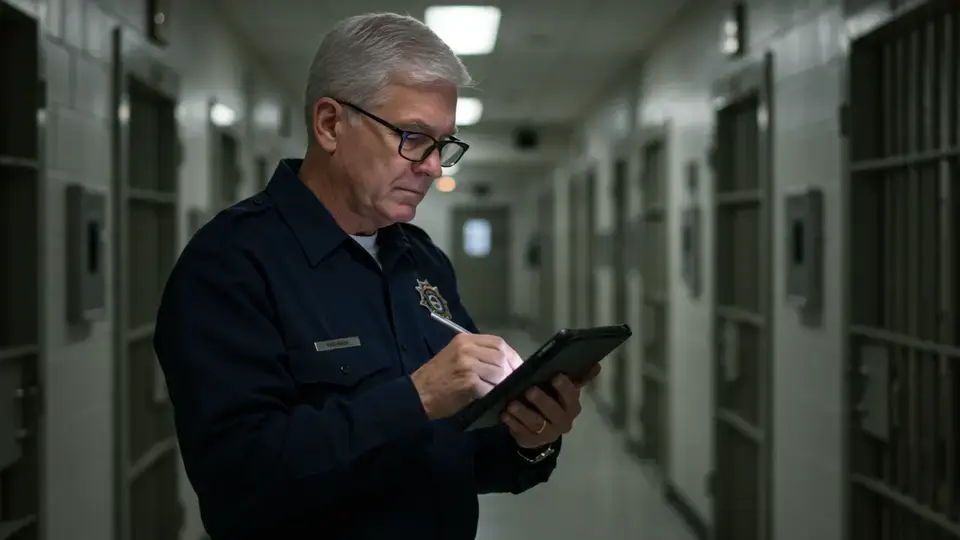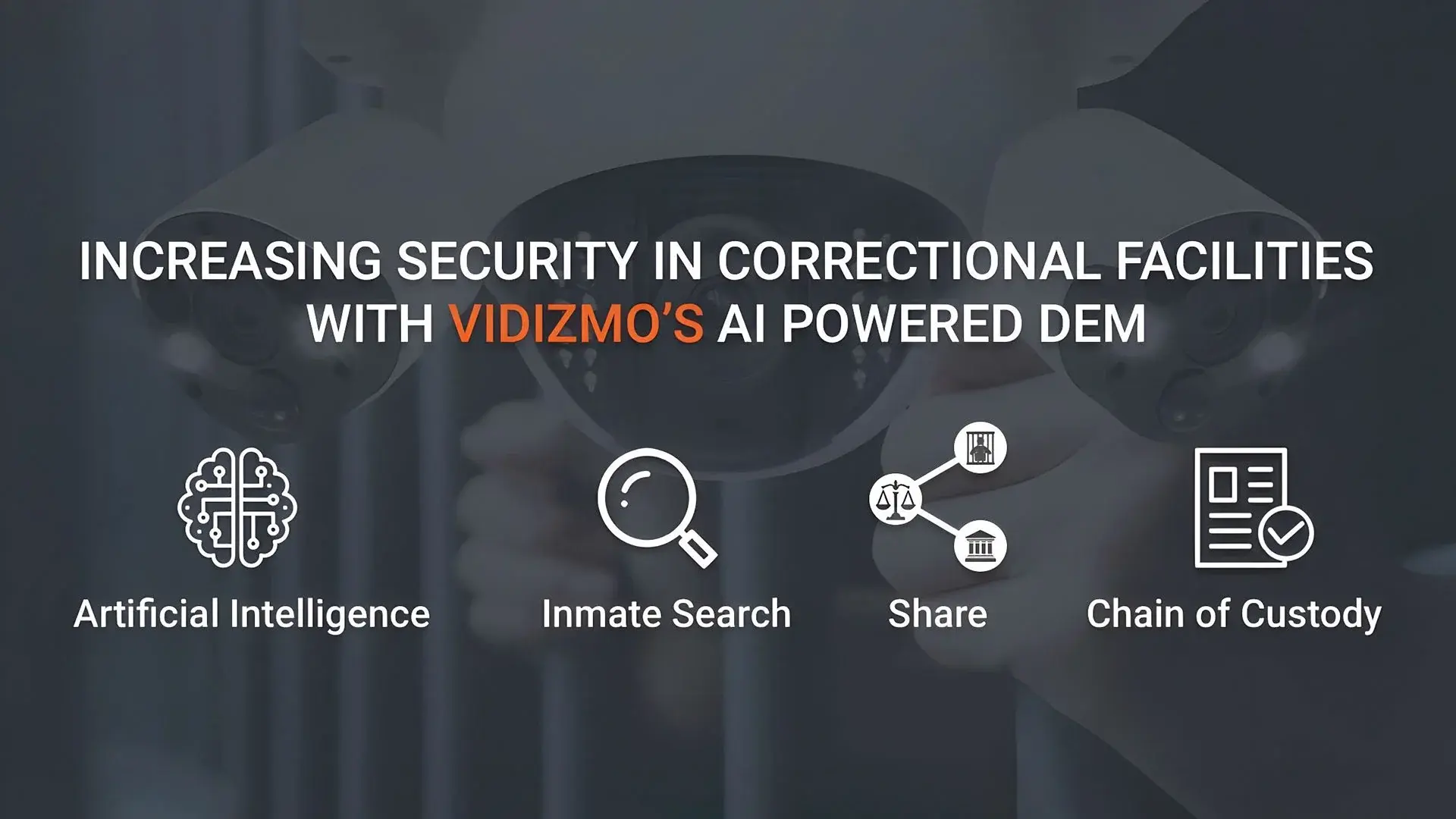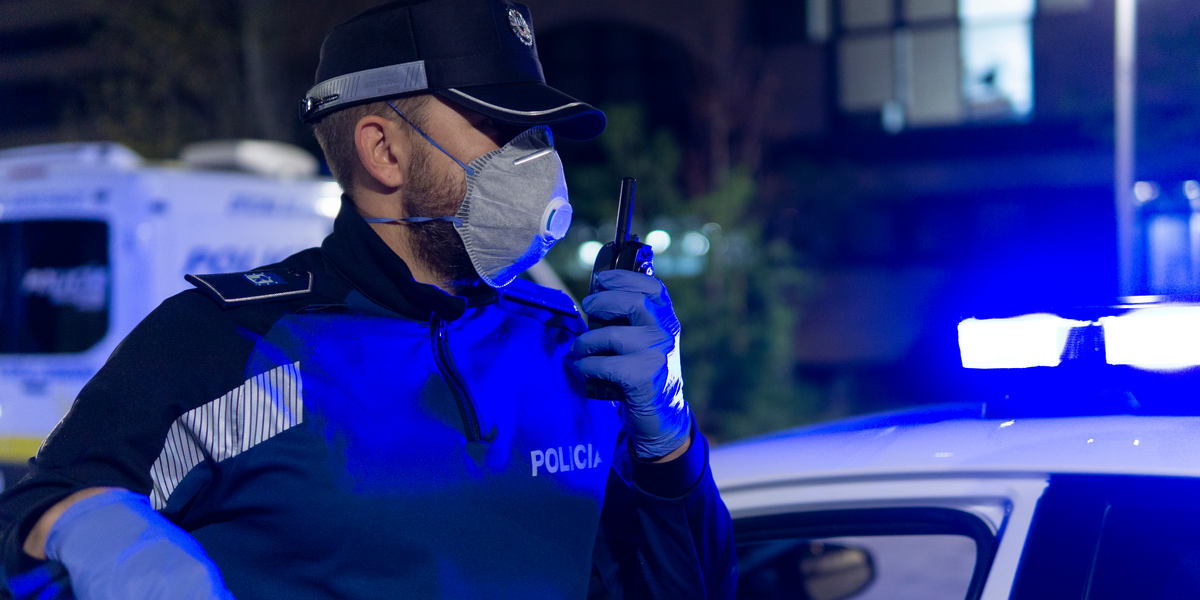Streamlining Investigations with Correctional Facility Technology
by Asim Haleem, Last updated: July 10, 2025, Code:

In correctional facilities, managing and reviewing digital evidence can be a time-consuming and overwhelming task. With surveillance cameras, body-worn cameras, and other monitoring tools, the volume of video footage generated daily is enormous.
While these records can provide valuable insights into incidents, manually reviewing hours of footage is inefficient, often delaying investigations and slowing down incident responses. The Federal Bureau of Prisons is under a congressional mandate to upgrade its outdated camera systems as well, with a 2024 infrastructure budget of $180 million (for roofs, perimeter fencing and cameras) to address critical blind spots.
Correctional facility technology is revolutionizing the way these challenges are addressed. Tools designed to automate the process of video analysis, summarization, transcription, redaction, and annotation are helping correctional teams work more efficiently.
These innovations not only cut down the time needed to identify critical events but also enhance decision-making by providing clearer, more accessible evidence.
By integrating these technologies, correctional facilities can improve both the speed and accuracy of investigations, ensuring that incidents are resolved faster and more effectively. With the ability to analyze long video footage, extract meaningful insights, and share relevant information securely, the right technology is transforming correctional operations for the better.
How Correctional Facility Technology Improves Investigations
Today’s correctional facilities are generating more video evidence than ever, starting with surveillance footage, body-worn camera recordings, intercom audio, and even monitored phone calls. But while data is in abundance, the capacity to make sense of it quickly often isn’t. Investigations can stall because officers or internal affairs teams are forced to manually shift through hours of raw footage just to identify what happened.
Correctional facility technology helps solve this by introducing automation into the evidence review process. Instead of watching hours of video, staff can use tools to find relevant segments in minutes. These tools scan motion, detect people, and even identify specific events such as when a fight breaks out, or an officer enters a cell block.
This level of automation doesn’t just save time. It helps investigators act while the evidence is still fresh and critical in cases involving inmate injuries, contraband smuggling, or staff misconduct.
Turning Hours of Footage into Actionable Insights
Correctional facilities generate an ongoing flow of surveillance video right from prison yards to corridors to individual cells. Yet when an incident occurs, identifying the critical moments within hours of continuous footage can be time-consuming and frustrating.
That’s where advanced long video analysis comes in. Rather than reviewing footage minute by minute, staff can quickly navigate through flagged segments based on motion detection, timestamps, or designated zones. Leveraging modern correctional facility technology significantly reduces the effort and time required to pinpoint key events during an incident.
For example, if an altercation occurs in the recreation area around 3:00 p.m., long video analysis allows officers to narrow their search to that time frame and area resulting in cutting a multi-hour search down to just minutes.
Making Video Content Searchable and Understandable
Once footage is identified, it needs to be understood. Investigations and incident reviews aren’t always based on visual cues alone; there needs to be a use case of correctional facility technology to decode what’s said in a hallway exchange or during an inmate confrontation matters just as much.
That’s where video summarization and transcription come in.
Summarization creates a condensed version of what happened in the footage, listing key moments and activities without needing to watch the full video. Meanwhile, transcription turns spoken words into readable text, making it easier for internal affairs, wardens, or legal counsel to search, quote, and reference specific dialogue.
This is particularly useful in environments where officers or inmates speak quickly, or where audio clarity is affected by background noise. Having a written transcript adds an extra layer of clarity to investigations and helps document proceedings accurately.
Helping Decision-Makers Keep Facilities Safer
For corrections administrators, the benefits of correctional facility technology extend beyond individual incidents. With analytics dashboards, leaders can review historical trends where most altercations occur, or which units see the most grievances. These insights help them make informed decisions about staffing, camera placement, and program scheduling.
More importantly, it gives leaders the tools to shift from a reactive model to a proactive one where safety risks are identified and addressed before they grow into larger problems.
Safeguarding Identities While Staying Transparent
With rising demands for public accountability, departments of corrections often receive formal requests for footage, especially after high-profile incidents. But before releasing any video, staff must ensure sensitive information is protected.
Redaction tools allow teams to blur or mask faces, name tags, screens, and other identifying information. This ensures inmate privacy, protects staff identities when needed, and helps the department stay compliant with legal standards and FOIA obligations.
Without this feature, redacting a single video could take several hours. But correctional facility technology makes the process more manageable by enabling frame-by-frame or timeline-based redaction with review controls. The result is quicker compliance and more confidence in what is being shared.
Adding Context to Critical Moments
Footage alone often lacks the full story. Investigators, supervisors, or legal personnel reviewing an incident may need context: Who initiated the event? What has happened before? Were staff following the proper procedure?
Annotation tools allow users to leave comments, flag moments, or mark important sections directly on the video timeline. This turns a raw video file into a documented evidence record. Annotations can be time-stamped, color-coded, or even categorized, for example, noting “verbal altercation begins” or “officer arrives on scene.”
This not only speeds up the review process but also improves communication between departments. A legal team, for instance, can understand the narrative quickly without relying solely on verbal reports.
Coordinating Faster Responses and Smarter Case Management
Time matters in correctional settings. Whether it's responding to a medical emergency or resolving allegations of misconduct, delays can lead to further risk or liability.
By using correctional facility technology with the features discussed such as long video analysis, summarization, transcription, redaction, and annotation. The departments can streamline how they manage digital evidence. Investigations move faster. Incident reviews become clearer. And staff spend less time buried in videos, and more time focusing on safety and response.
These tools don't just make workflows more efficient as they help protect lives, defend reputations, and improve outcomes for inmates and staff alike. The global Prison Management Systems market (covering software and services for corrections) was valued around $1.2 billion in 2024 and is projected to reach $1.5 billion by 2030.
How VIDIZMO DEMS Can Be an Ideal Solution for Streamlining Correctional Facility Operations
VIDIZMO provides cutting-edge correctional facility technology designed to help institutions efficiently manage vast amounts of digital evidence. With its Long Video Analysis capabilities, VIDIZMO enables correctional teams to quickly locate relevant footage, reducing the time spent sifting through hours of raw video.
Whether it's identifying key moments from surveillance cameras or body-worn cameras, VIDIZMO’s advanced video analysis features allow staff to focus on what matters most while investigating incidents and ensuring safety.
In addition to video analysis, VIDIZMO offers summarization and transcription tools that help make video content more accessible and easier to understand. With automatic video summarization, officers can quickly get an overview of incidents, while transcription services convert spoken words into text for easier reference.
These tools not only save valuable time but also help ensure that critical details are never overlooked during investigations, helping correctional officers and decision-makers maintain clarity and accuracy.
Moreover, VIDIZMO’s redaction and annotation tools enhance compliance with privacy regulations and provide a seamless way to share video content securely. Redaction features ensure that sensitive information is automatically blurred or masked, protecting inmate privacy and staff identities.
At the same time, annotations allow investigators to mark critical moments within the footage, adding context and improving communication between teams. With VIDIZMO, correctional facilities can stay ahead of compliance requirements while improving the overall efficiency of their investigation and incident response workflows.
The Impact of Correctional Facility Technology on Incident Management
Implementing Correctional facility technology offers a comprehensive solution to the challenges faced by modern correctional departments. With advanced tools like long video analysis, summarization, transcription, redaction, and annotation, VIDIZMO helps facilities streamline investigations, improve incident response times, and ensure compliance with legal standards. By integrating these technologies, correctional teams can work more efficiently, making informed decisions faster and ensuring greater transparency in their operations.
VIDIZMO’s platform not only simplifies the video review process but also enhances the security and privacy of sensitive information, allowing correctional institutions to meet strict compliance requirements while protecting inmate and staff data. From faster incident resolution to improved communication between teams, VIDIZMO is a powerful tool that supports the safety and effectiveness of correctional facilities.
Ready to transform your facility’s digital evidence management? Explore how VIDIZMO’s solutions can help streamline your operations and enhance incident response.
People Also Ask
What is correctional facility technology and how does it improve operations?
Correctional facility technology includes tools that help manage digital evidence, such as video and audio recordings. It improves operations by streamlining investigations, enhancing incident response, and ensuring better data management.
How does long video analysis benefit correctional facilities?
Long video analysis helps quickly identify key moments in hours of surveillance footage, saving time and improving incident response by focusing only on relevant events.
How does transcription work in correctional facility technology?
Transcription converts spoken dialogue from videos or audio into text, making it easier to search and reference important statements during investigations.
Why is redaction important in correctional facility video management?
Redaction automatically blurs sensitive information, such as faces or names, to protect privacy and ensure compliance with privacy laws while allowing footage to be shared for legal purposes.
How does annotation help in managing correctional facility incidents?
Annotation allows staff to mark important moments in video footage, adding context and improving communication between teams during investigations.
What are the benefits of using summarization in video footage for corrections?
Summarization condenses hours of footage into key moments, helping staff quickly review critical events without watching the entire video.
Can correctional facility technology improve transparency?
Yes, by enabling quicker and more accurate video review, redaction, and sharing, correctional technology enhances transparency and helps meet legal obligations.
How does VIDIZMO support correctional facility operations?
VIDIZMO provides tools like video analysis, transcription, redaction, and annotation, streamlining investigations and improving incident response in correctional facilities.
What role does video analysis play in improving incident response to corrections?
Video analysis allows staff to quickly locate and assess video footage of incidents, enabling faster responses to critical events.
How does transcription help in legal compliance with correctional facilities?
Transcription turns spoken words into text, making it easier to access documents for legal proceedings and ensuring compliance with legal standards.
Jump to
You May Also Like
These Related Stories
-4.webp)
How Automated Summarization Transforms Investigations in Corrections

Evidence Management Software for Security in Correctional Facilities


No Comments Yet
Let us know what you think